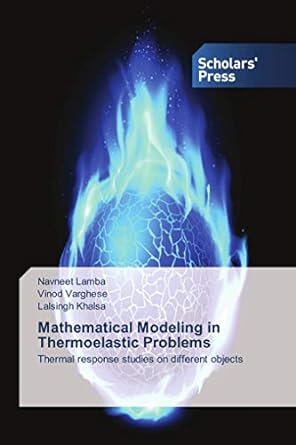Go back


Mathematical Modeling Of Physical Properties For Hexagonal Binaries Mathematical Modeling Of Ionicity Factor And Bulk Modulus For Hexagonal Binary Semiconductor Materials(1st Edition)
Authors:
Ghassan Ezzulddin Arif, Yarub Al Douri

Cover Type:Hardcover
Condition:Used
In Stock
Include with your book
Free shipping: April 06, 2024Popular items with books
Access to 3 Million+ solutions
Free ✝
Ask 10 Questions from expert
200,000+ Expert answers
✝ 7 days-trial
Total Price:
$0
List Price: $90.00
Savings: $90(100%)
Book details
ISBN: 3639864689, 978-3639864687
Book publisher: Scholars' Press (February 26, 2016)
Get your hands on the best-selling book Mathematical Modeling Of Physical Properties For Hexagonal Binaries Mathematical Modeling Of Ionicity Factor And Bulk Modulus For Hexagonal Binary Semiconductor Materials 1st Edition for free. Feed your curiosity and let your imagination soar with the best stories coming out to you without hefty price tags. Browse SolutionInn to discover a treasure trove of fiction and non-fiction books where every page leads the reader to an undiscovered world. Start your literary adventure right away and also enjoy free shipping of these complimentary books to your door.
Mathematical Modeling Of Physical Properties For Hexagonal Binaries Mathematical Modeling Of Ionicity Factor And Bulk Modulus For Hexagonal Binary Semiconductor Materials 1st Edition Summary: Model is a miniature representation of something; a pattern of something to be made; an example for imitation or emulation; a description or analogy used to help visualize something (e.g., an atom) that cannot be directly observed; a system of postulates, data and inferences presented as a mathematical description of an entity or state of affairs. This definition suggests that modeling is an activity, a cognitive activity in which we think about and make models to describe how devices or objects of interest behave. We can use words, drawings or sketches, physical models, computer programs, or mathematical formulas. In other words, the modeling activity can be done in several languages, often simultaneously. Since we are particularly interested in using the language of mathematics to make models. Mathematical model is a representation in mathematical terms of the behavior of real devices and objects. We want to know how to make or generate mathematical representations or models, how to validate them, how to use them, and how and when their use is limited. However, before delving into these important issues, it is worth talking about why we do mathematical modeling.
Customers also bought these books
Frequently Bought Together
Top Reviews for Books
Request mzjpssc
( 4 )
"Delivery was considerably fast, and the book I received was in a good condition."










